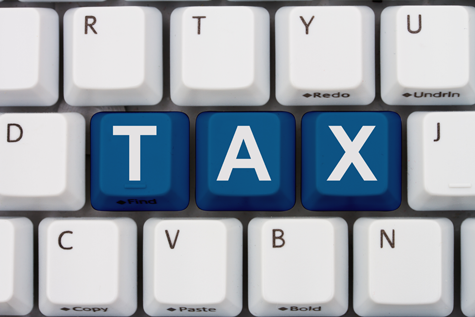A 10-Step Guide to Working With Freelancers

With the promise of lower overhead and more specialized workers, many businesses have turned to freelancers (for quite some time now, really) to complete projects on an individual or ongoing basis. These independent contractors don't receive benefits, can be called upon as needed and require less day-to-day management than full-time employees.
Although hiring freelancers can definitely be a cost-saving venture for any business (especially those looking for more creative-type help), there are certainly considerations to be made when it comes to everything from compensation to security. Following this detailed 10-step checklist, however, will ensure a happy and successful conclusion for both parties.
1. Find a Freelancer
Before heading to one of the top freelance marketplaces (e.g. elancer.com, freelancer.com, etc.), business owners or managers should elicit the help of their peers. Often people will take to their social accounts for recommendations for a designer, writer or other creative type. Beyond that, most people have a former colleague who may be interested in extra work or may be in between jobs and looking to stay current and working. It's better to ask around first, because "the devil you know is better than the devil you don't." That's not, however, calling freelancers evil, but the truth is, working on projects with other professionals is tough, and if a manager already knows another's strengths and weaknesses, the project is off to a better start.
2. Interview the Candidate
Regardless of whether there is an existing relationship with the potential freelancer, if he or she was recommended by a respected friend or if the candidate was selected from a job site, managers should do their due diligence by asking for a resume and interviewing the prospect just like one would for a full-time position. This is an important step in deciding if this person is right for "this" project. Sample questions could include how much time they have to dedicate to the tasks at hand, their preferred communication style, what technology (computers, software, etc.) they have access to at home and, of course, their experience with this type of project. Interviews can be done in person or via Skype, Facetime or Google Hangouts. Finally, even though freelancers typically only have one point of contact within the company they are being contracted for, a quick bio of the freelancer should be sent out to anyone within the business that will come in contact with the freelancer's work, so everyone is confident in the decision to bring the person in the loop.
3. Provide a Contract
Many businesses make the mistake of treating the freelance-work arrangement too casually, and their end result may suffer. By treating the independent contractor as a valued business partner, the chances are greater that the freelancer will return the favor. One way to do so is with an actual contract, including the project name, the tasks that it will take to complete the project, any associated deadlines (more on that below), start date, title, compensation (hourly or by project completed) and payment arrangements (invoice due dates, direct deposit, etc.). This contract should be signed by both parties and should include some legal verbiage not binding either party to any other agreement they may have discussed outside of what is written, who owns the creative property and more (at the advice of a lawyer).
4. Get a 1099
An easy download from the IRS's website, a 1099 is a tax form for miscellaneous income. Independent contractors are very familiar with this form and will expect to be provided one. They should, however, be reminded that they are responsible for paying their own taxes on the income.

5. Give Access
Now that it's time to work, managers will need to decide which business applications a freelancer needs access to in order to complete their assigned tasks. If a company has brought on an article writer, his or her manager must figure out if the writer will submit articles in a Word document via email or enter the content in the company's content management system (CMS). The plus side of having the writer enter the information themselves, is that it takes less time for the manager (who can then edit and approve the article directly within the CMS rather than manually entering it themselves). The downside, however, is that now a freelancer, who a manager may not know that much about (as there typically isn't as much of a personal bond formed with these types of remote workers), has access to a critical business asset. Depending on the CMS, however, there might be a set of authorization levels that can be given. The trust factor is yet another reason why bringing on a freelancer who a manager is already familiar with is the way to go. Other access points a freelancer may need to be provided is to certain Google Documents, image folders, project management software, etc.
6. Onboard the Freelancer
With access to needed applications, business managers should provide a clear outline for what needs to be done and how. These early stages of a project will take a bit more time, as a manager walks the freelancer through business/client expectations, branding requirements and more. For example, an agency may take on a social media freelancer who will need to know that the client wants all images shared on social media to be watermarked with their logo. Likewise, a writer will not know the company's owner dislikes acronyms or third person. Although these brand-centric items can certainly be shared with a freelancer, this is definitely where full-time employees shine, as they are more immersed in company culture and norms.
To be successful, managers will need to know what they are looking for at the outset of the project (this is a top characteristic designers look for in clients).

7. Communicate Respectfully
Freelancers are often picking up independent contract work to earn extra cash, so they likely already have full-time jobs or other ongoing projects. Managers should respect freelancers' time by either (1) not text messaging or calling the freelancer during their working hours (it's easy to ask what those are) and/or (2) corresponding with the freelancer during a previously arranged time period. On the other hand, emails can be sent and replied to at any time day or night, because there is an expectation that those communications will be responded to at the recipient's earliest convenience (often within 24 hours). If this situation is creating a problem for managers, they might need to consider hiring a full-time employee, because freelancers require more flexibility in all aspects of project completion.
8. Set Deadlines
As previously stated, depending on their personal arrangements, most freelancers have other obligations (jobs, family, etc.) that require them to set aside a certain amount of time to complete a freelance project (whether that's a one-time project or an ongoing one). That said, businesses should set clear deadlines, so that there are no last-minute phone calls (see previous point) asking for status updates, completed work or extra responsibilities, which may interrupt the freelancer from his or her more permanent responsibilities. The clearer the boundaries set up by both parties, the better the freelancer-business relationship will go, and the better the work that will result from it. A variety of tools exist to set deadlines and remind users, including simply setting up a Google calendar or going for a more advanced (yet easy-to-use) solution like Asana or Glip.
9. Deliver Feedback
Regardless of whether the freelancer will be ‘asked' back or not, the manager should deliver feedback as to the high-level success/failure of the campaign (no need to go into datapoints) or general sentiment around the completed project. In fact, a few years back, 99Designs surveyed freelance designers and their top challenge in working with clients was lack of helpful feedback.
Providing feedback will not only help the freelancer understand what worked or what went wrong but also, and more importantly, help the manager get a better understanding of who to hire next time, decide whether this type of project lends itself to a full-time position or how to optimize similar campaigns in the future.

10. Pay the Freelancer
If a business did their initial homework (create a contract and have a freelancer sign the contract), there should be no dispute as to how much it owes the independent contractor. Of course, if a project is hourly, they often have to take the freelancer's word (although there are freelancer time-tracking apps) but that's a decision that needed to be made early on (whether compensation was hourly or project based), so when it's time to pay the freelancer, there are no delays.
Summary
Although freelancers can help businesses accomplish certain goals or projects often quickly and affordably, business owners should understand that they do have to manage the process as they will only get the work they want based on the work they've put in to educate and communicate with the freelancer's efficiently.

Subscribe to Our Newsletter!
Latest in Marketing








